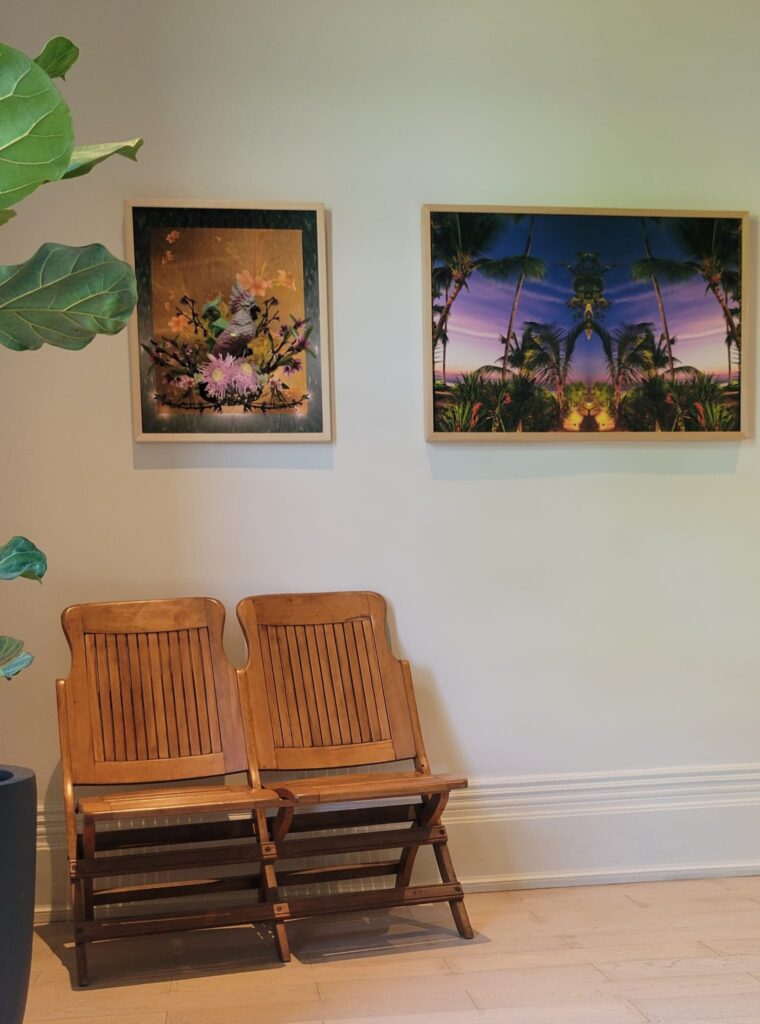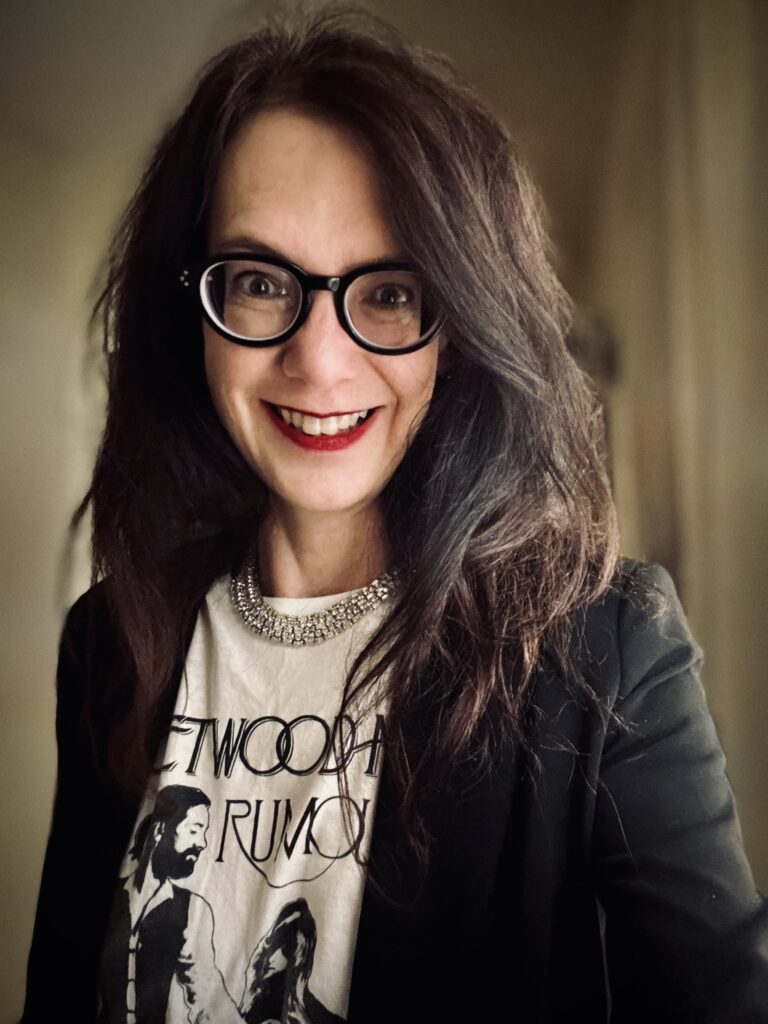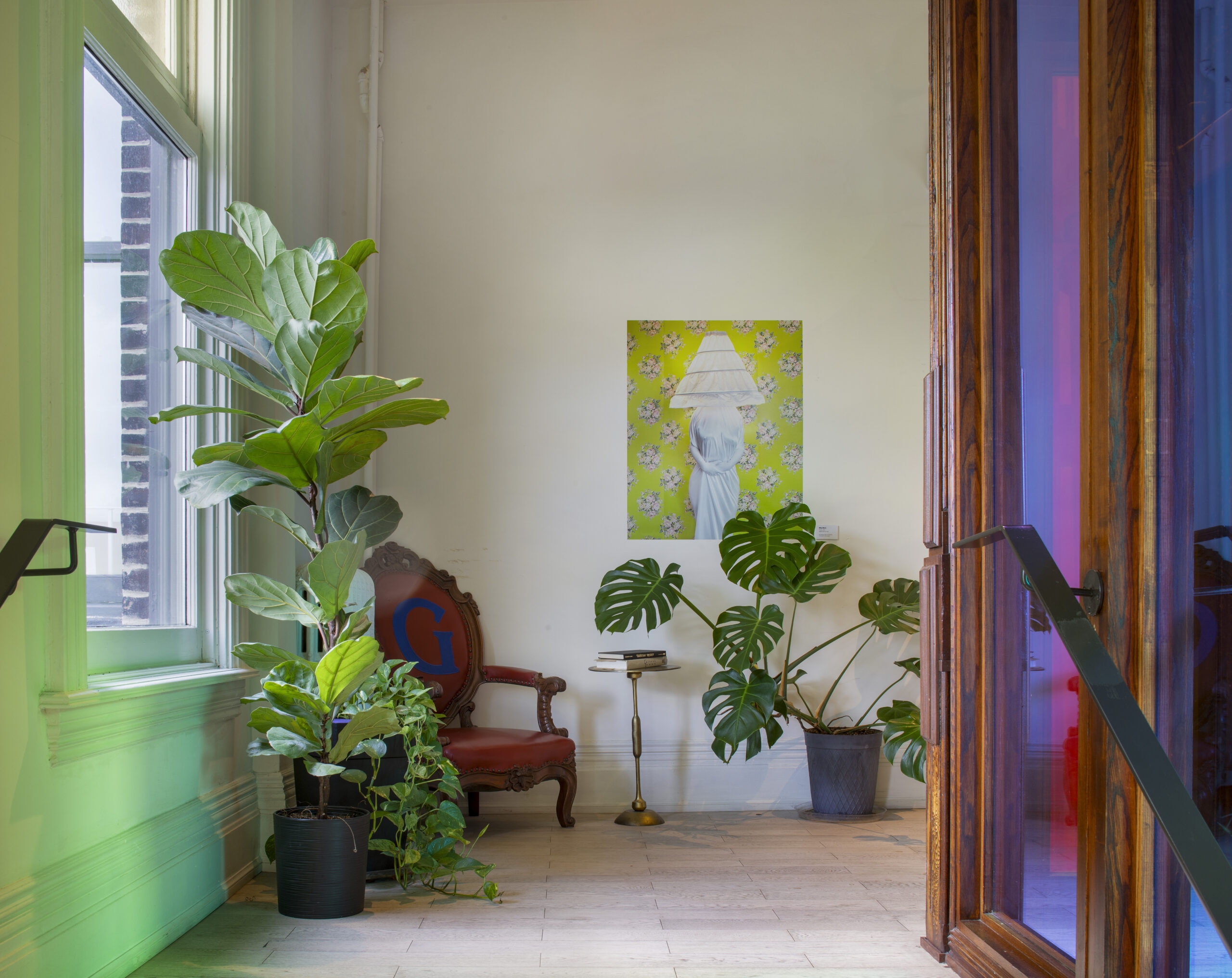A Lobby That Invites You In
Walk into the Gladstone House lobby and you’ll find far more than a standard check-in desk. Light dances across the entrance thanks to a dichroic film installation that shifts with the time of day, and art lives in every corner: hallways, lounges, even the elevator. It’s not simply a place to pass through, but a space designed to make you stop, look, and linger. For both guests and locals, Gladstone House functions as a third place: a welcoming in-between zone where culture and comfort meet, the result of a curation philosophy rooted in accessibility and warmth.
As Lee Petrie, the hotel’s curator, explained during our tour and interview, “We want the art to feel like it belongs here, like it’s part of the furniture of the building, not something sacred or removed.”
A Living Landmark Still Evolving
Built in 1898, Gladstone House is Toronto’s oldest operating hotel and a long-standing landmark in the Parkdale neighborhood, once a rest stop for travelers arriving by train. While we explore its full architectural story in our design and preservation feature, what continues to shift today is how the space is activated. Under the thoughtful eye of curator Lee Petrie, the hotel honors its history while amplifying Toronto’s creative present.
Art at Gladstone House: Rooted in Toronto’s Creative Community
Petrie, who also curates the art programs at Postmark and Broadview Hotels, approaches her work with a clear point of view. As she put it:
“We want guests to walk in and think, ‘What a neat place, I can’t wait to get comfortable, grab a drink, and explore,’ like they’ve arrived at someone’s fabulous home. The furniture isn’t institutional, there are plants, a billiards table. It all makes the space feel personal, not like a typical chain hotel.”
All featured artists are Toronto-based. The art rotates every four months, and permanent pieces are installed across the hotel’s 55 guest rooms. Currently on display:
Nika Belianina
Her photographic works, taken mostly in the Dominican Republic are digitally mirrored to form surreal architectural portals and subtle insect-like shapes. Shot in available evening light, they create a moody vibrancy and dreamlike depth. The result is immersive and transportive.
Laura Kay Keeling
Keeling blends digital mirroring with layered textures. Her collages include both photographed objects and digitally inserted found materials like lace, jewel tones, and organic forms, inviting guests to look closer. The magic lies in the uncertainty: what’s real, what’s constructed, and where the two blur.
This exhibition is set to rotate after Labour Day, part of the hotel’s ongoing rhythm of fresh creative energy.

A Tour Through Texture, Story, and Space
During our visit with Lee, she guided us through the hotel’s winding staircase and open hallways, pointing out stories and materials with equal parts care and enthusiasm. We visited the artist residency area, met a few creators in action, and walked through several guest rooms, each one home to an original piece by a different Toronto artist.
In communal spaces and the lobby bar, Lee brought each work to life: naming the artists, describing their process, and explaining why specific pieces belonged in particular corners. She also emphasized the importance of written labels, noting that context builds connection, especially for guests who might not consider themselves art-savvy. “Art can be for everyone,” she told us. “You don’t need a degree to enjoy it, sometimes it’s just about feeling comfortable being surrounded by it.”
Each room featured standout work: art that was eye-catching, unexpected, and often smile-inducing. One room played with the idea of “counting sheep,” featuring handmade ceramic sheep figures for a whimsical and restful nod to bedtime. Another displayed coin-inspired creatures, where the artist fused the animal sides of different coins to form hybrid animals. A clever take on perception, currency, and imagination.
Lee’s curatorial approach isn’t about spectacle. These works don’t shout or overwhelm. They invite. They’re selected to make people feel something, to linger in the space with a new lens, even if just for a moment.
Supporting Artists, Sparking Belonging
While most artwork is rented for extended periods, Lee reserves space for short-term exhibitions, often pulling in standout pieces from grad shows or local openings. The program balances consistency with discovery, giving both established and emerging voices a chance to shine.
That philosophy reflects Gladstone House as a whole. Whether you’re checking in, grabbing a drink, or simply wandering through, the hotel isn’t simply showing art. It’s creating a place where art, and the people around it, can feel like they belong.

